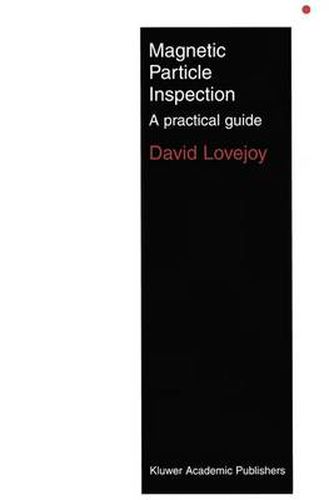Readings Newsletter
Become a Readings Member to make your shopping experience even easier.
Sign in or sign up for free!
You’re not far away from qualifying for FREE standard shipping within Australia
You’ve qualified for FREE standard shipping within Australia
The cart is loading…






This title is printed to order. This book may have been self-published. If so, we cannot guarantee the quality of the content. In the main most books will have gone through the editing process however some may not. We therefore suggest that you be aware of this before ordering this book. If in doubt check either the author or publisher’s details as we are unable to accept any returns unless they are faulty. Please contact us if you have any questions.
This concise text is intended primarily to support NDT operators, supervisors, and managers in their preparation for the various certification examinations including PCN, CSWIP, ASNT and the similar certification procedures organized by COFREND (France), DGZfP (Germany), AIPND (Italy) and others around the world. It should also be of use to undergradute studies in engineering schools with its strong emphasis on the practical applications of magnetic particle inspection (MPI). The theory underlying the method is dealt with at two levels. Currently there is, at Levels I and II of the Certifications, a need to know about magnetism and magnetic properties and field theory simply and descriptively. For Level III there is an increasing need to understand these topics and this can be expected to extend to Level II staff in the coming years. The book comprises 16 chapters which cover the history of the technique, origins of defects in iron and magnetizable steels, magnetic properties of materials and magnetic fields (at two levels), the influence of electrical current waveform methods for magnetizing and demagnetizing workpieces, characteristics of magnetic particles, liquid carriers and associated chemicals. Procedures and documentation are dealt with, as is the problem of choosing a specific method for application of MPI in specific instances. Other chapters cover equipment, quality control, measurement of magnetic fields, health and safety and environmental considerations. This book is designed to serve as a training manual for inspectors/operators and a reference for undergraduates/graduates in all manufacturing industries.
$9.00 standard shipping within Australia
FREE standard shipping within Australia for orders over $100.00
Express & International shipping calculated at checkout
This title is printed to order. This book may have been self-published. If so, we cannot guarantee the quality of the content. In the main most books will have gone through the editing process however some may not. We therefore suggest that you be aware of this before ordering this book. If in doubt check either the author or publisher’s details as we are unable to accept any returns unless they are faulty. Please contact us if you have any questions.
This concise text is intended primarily to support NDT operators, supervisors, and managers in their preparation for the various certification examinations including PCN, CSWIP, ASNT and the similar certification procedures organized by COFREND (France), DGZfP (Germany), AIPND (Italy) and others around the world. It should also be of use to undergradute studies in engineering schools with its strong emphasis on the practical applications of magnetic particle inspection (MPI). The theory underlying the method is dealt with at two levels. Currently there is, at Levels I and II of the Certifications, a need to know about magnetism and magnetic properties and field theory simply and descriptively. For Level III there is an increasing need to understand these topics and this can be expected to extend to Level II staff in the coming years. The book comprises 16 chapters which cover the history of the technique, origins of defects in iron and magnetizable steels, magnetic properties of materials and magnetic fields (at two levels), the influence of electrical current waveform methods for magnetizing and demagnetizing workpieces, characteristics of magnetic particles, liquid carriers and associated chemicals. Procedures and documentation are dealt with, as is the problem of choosing a specific method for application of MPI in specific instances. Other chapters cover equipment, quality control, measurement of magnetic fields, health and safety and environmental considerations. This book is designed to serve as a training manual for inspectors/operators and a reference for undergraduates/graduates in all manufacturing industries.